Description
Hale’s Best Jumbo Cantaloupe (a.k.a. Hale’s Best Original, Hale’s Best Jumbo #936, Hale’s Jumbo)
25 Seeds per pack
Days to Maturity: 85–110 days
Sun Requirements: Full Sun
Botanical Name: (Cucumis melo)
Best Seller!
Introduced by Japanese immigrants in California during the 1920s, Hale’s Best Jumbo has been a trusted favorite in home gardens for over 80 years! This heirloom selection, named after C.C. Hales, produces large, oval fruits measuring up to 7½″ long and weighing 3–6 pounds. The rind is yellow-green with heavy netting and prominent ribs, encasing thick, salmon-orange flesh that’s sweet, juicy, and richly aromatic. Fruits have a small seed cavity, which means there’s more sweet flesh in every melon!
Plants form large, spreading vines that grow 12–18″ tall and typically spread 3–6′ or more. They’re known for being productive and dependable, setting fruit early and continuing throughout the season. These vines thrive in full sun, handle heat and dry spells better than most, and grow well in a variety of soils. They also have natural resistance to powdery mildew and other common melon issues, adding to their dependability in the garden.
They grow well in garden beds, raised beds, or even greenhouses. The thick, netted rind helps the melons stay firm and fresh during storage or transport. Packed with vitamins A, B, and C, Hale’s Best Jumbo is a time-tested choice for Home gardeners and market growers alike!
Disease Resistance: Powdery Mildew
Planting Instructions for Hale’s Best Jumbo Cantaloupe Seeds
When to Plant:
Direct sow Hale’s Best Jumbo Cantaloupe seeds outdoors 1 to 2 weeks after your last frost date, once the soil consistently reaches 70°F (21°C) or warmer. For shorter seasons or cooler regions, start seeds indoors 4 to 6 weeks before last frost, using peat pots or soil blocks to avoid root disturbance. Transplant outdoors after hardening off and when both soil and air temperatures are consistently warm and the danger of frost is past.
Where to Plant:
Choose a site in full sun that receives at least 8 hours of direct sunlight daily. Hale’s Best Jumbo Cantaloupes thrive in fertile, well-drained soil with a pH of 6.0–7.0. Raised beds or south-facing slopes are ideal. Incorporate 2–3 inches of compost before planting. Avoid planting in areas that recently grew other melons, cucumbers, squash, or pumpkins.
How to Sow:
Sow seeds ½” to 1″ deep. If planting in rows, space seeds or transplants 18–36″ apart in rows 5–6′ apart. For hills, sow 3–4 seeds per hill and thin to the strongest 1–2 plants. For trellising, space plants 12–18″ apart along a sturdy support.
Watering:
Keep soil consistently moist through germination. Once vines are established, provide 1–2 inches of water per week. Water deeply and less frequently to encourage deep rooting. Reduce watering slightly once fruit begins to ripen to improve sweetness and avoid splitting. Avoid overhead watering to reduce the risk of mildew.
Fertilization:
Mix compost into the planting site before sowing. Additional fertilizer is typically not needed unless soil is poor. If desired, side-dress with compost tea, fish emulsion, or a balanced organic fertilizer once vines begin to spread and again when the first small fruits begin to form.
Mulching:
Once your seedlings are growing well, add mulch around the plants. Use black plastic if your goal is to warm the soil. Warmer soil helps seeds sprout faster and encourages early root and vine growth, which is especially helpful in cooler climates or early in the season. If you’re mainly trying to hold in moisture and stop weeds, straw or shredded leaves are good options, but they won’t help the soil warm up as much. Mulching also keeps the fruits clean by lifting them off the dirt and helps stop mud from splashing onto them when it rains.
Training & Pruning:
Vines can be allowed to sprawl or trained vertically. For vertical growth, support fruit with cloth slings. If desired, lightly prune some of the small side branches that grow off the main vine to help air move through the plant and let it focus energy on growing better-quality fruits. Avoid over-pruning, which can reduce flower production and sugar development.
Pollination:
Hale’s Best Jumbo Cantaloupes produce both male and female flowers. Bees and other pollinators are essential for fruit set. Encourage pollination by planting pollinator-friendly flowers and herbs nearby. Good choices include borage, dill, sunflowers, marigolds, and oregano allowed to flower. These help attract bees and other insects that will visit your Hale’s Best Jumbo Cantaloupe blooms. In low-pollinator areas, hand pollinate by transferring pollen from male to female blooms using a small paintbrush.
Common Pests & Diseases:
- Pests: Watch for aphids, cucumber beetles (vector for bacterial wilt), squash bugs, and vine borers. Use row covers until flowering, hand-pick pests, or apply insecticidal soap in the early morning or evening.
- Diseases: Powdery mildew, downy mildew, and leaf blights can occur. Improve air circulation, avoid overhead watering, and space plants adequately. Treat outbreaks with organic fungicides or DIY sprays (e.g., baking soda solution).
Harvesting:
Hale’s Best Jumbo Cantaloupes are ready to harvest when the rind turns golden beige, the netting becomes coarse and well-developed, and the fruit slips easily from the vine with gentle pressure. The blossom end should give slightly when pressed, and the melon will give off a rich, sweet aroma when fully ripe.
Storage:
Store ripe, uncut Hale’s Best Jumbo Cantaloupes at 45–50°F for up to 1 week. Once cut, refrigerate and use within 3 days. Wash melons thoroughly before cutting to avoid transferring bacteria from rind to flesh.
Seed Saving:
Saving Hale’s Best Jumbo Cantaloupe seeds is an enjoyable and economical way to preserve this classic heirloom variety. Hale’s Best Jumbo Cantaloupes are insect-pollinated and cross readily with other melon types, so avoid growing multiple melon varieties within ½ mile of one another.
Let the melons ripen fully on the vine. Once picked, cut them open the long way and scoop out the seeds into a jar. Add room temperature (not hot) water and let the mixture sit for 2 to 4 days, stirring it once each day to help the seeds separate. Good seeds will sink, while pulp and non-viable seeds float. Pour off the debris, rinse the good seeds thoroughly, and spread them out on a paper towel or mesh screen to dry for several days in a well-ventilated area.
Once your seeds are fully dry, you can store them in a labeled container. For longer storage, you can keep the container right in the freezer. Freezing helps protect seeds from moisture, pests, and temperature swings, especially over many months. For a quick and easy option, use our seed-saving envelopes. They’re simple to use, pre-labeled, and include spaces to write the variety, date, and any notes you want to remember. They help keep your seeds neat, labeled, and easy to find when you’re ready to plant next season. When stored properly, Hale’s Best Jumbo Cantaloupe seeds can last 3–5 years.
FAQ:
What is the historical or notable background of Hale’s Best Jumbo Cantaloupe?
Hale’s Best Jumbo was introduced in the 1920s by Japanese immigrants in California and named after C.C. Hales. It has remained a heirloom favorite melon for over 80 years, and is known for its dependability and rich, aromatic flavor.
How would you describe the flavor of Hale’s Best Jumbo Cantaloupe?
This cantaloupe features thick, salmon-orange flesh that is sweet, juicy, and aromatic—ideal for fresh eating and fruit salads.
What does Hale’s Best Jumbo Cantaloupe look like, and how does it grow?
The fruits are large and oval, up to 7½″ long, weighing 3–6 pounds. They have a yellow-green rind with heavy netting and pronounced ribs. Plants grow as sprawling vines that spread 3–6′ and stand 12–18″ tall.
How and when do I harvest Hale’s Best Jumbo Cantaloupe?
Harvest when the rind turns golden beige and the netting is coarse. Ripe melons slip easily from the vine with gentle pressure and emit a sweet aroma. The blossom end should yield slightly to touch.
When is the best time to plant Hale’s Best Jumbo Cantaloupe?
Sow seeds outdoors 1–2 weeks after the last frost when soil temps reach 70°F. For short seasons, start indoors 4–6 weeks before the last frost and transplant after hardening off.
What are common culinary uses for Hale’s Best Jumbo Cantaloupe?
Enjoy it fresh, cubed in fruit salads, blended in smoothies, or wrapped in prosciutto. Its rich sweetness also makes it great for chilled soups and desserts.
What’s the best way to store Hale’s Best Jumbo Cantaloupe after harvest?
Store whole ripe melons at 45–50°F for up to a week. Once cut, refrigerate and consume within 3 days. Always wash the rind before slicing to prevent contamination of the flesh.
What nutrients does Hale’s Best Jumbo Cantaloupe provide?
This melon is packed with vitamins A, B, and C, contributing to eye health, immune support, and skin vitality.
Does Hale’s Best Jumbo Cantaloupe have any notable disease resistance?
Yes, it has natural resistance to powdery mildew and performs reliably in a variety of garden conditions, including heat and dry spells.
Be not anxious about what you have, but about what you are. -St. Gregory the Great
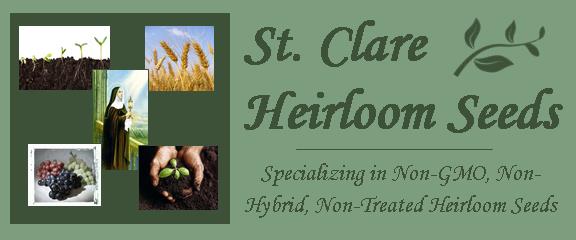
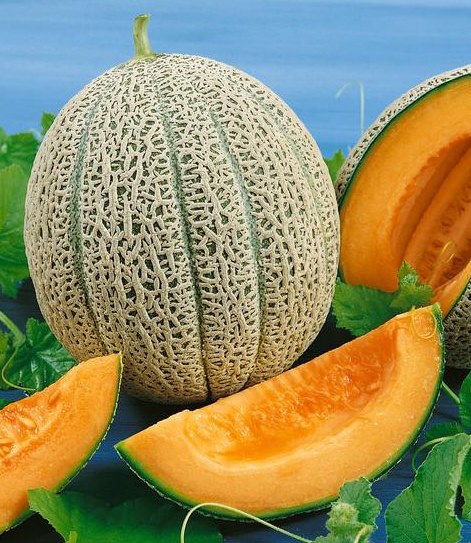










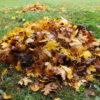
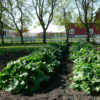

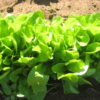


Sabrina D. (verified owner) –
The time line on the package for planting to yield etc. pretty spot on.
John R. (verified owner) –
only about 20 % germination
Steve Johnson (verified owner) –
Excellent company – Everything comes out as expected.
Perry Kovash (verified owner) –
Great price
Richard Wallace (verified owner) –
great
Sheila (verified owner) –
I bought these for next year – too late to plant them this year, but am looking forward to seeing how they do.
Thomas Sapp (verified owner) –
Don’t know yet, planted late and have not eaten any
Sandra (verified owner) –
amazing
Brad C. (verified owner) –
I just randomly searched for seeds on the internet and St. Clare’s came up. Did not realize this was such a Christian and Patriot company. It was a pleasant surprise. God Bless. The service was great. Have not yet been able to plant the seeds.
Rob M. (verified owner) –
Did very well here in the Southern Piedmont region!
Valerie S. (verified owner) –
I have not planted yet but seeds arrived quickly and well packaged. Love St. Clare Seeds!
Marie H. (verified owner) –
GOOD
Dan White (verified owner) –
Nicely packaged with care.
Nancy B. (verified owner) –
5 star!
patricia toole (verified owner) –
5 star!
Robert D. (verified owner) –
Patricia Stone (verified owner) –
5 star!
Kathy (verified owner) –
Great price, excellent service, wonderful seeds !
Barbara McClure (verified owner) –
karen bergerson (verified owner) –
5 star!
Kyle (verified owner) –